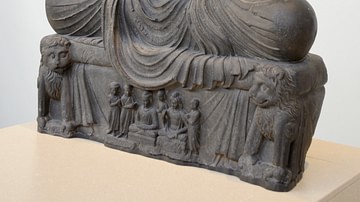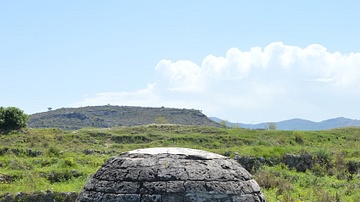Illustration
The various levels of construction in the cities and monuments of Taxila from the oldest (bottom) to the latest (top) as recreated at Taxila Museum.
-Early Rubble Masonry: 2nd cent BCE and earlier (Bottommost)
-Rubble Masonry: 2nd cent BCE to 1st century CE
-Small Diaper Masonry: 1st cent CE to 2nd cent CE
-Large Diaper Masonry: 2nd cent CE to 3rd cent CE and later
-Semi Ashlar Diaper Masonry: 2nd cent CE to 5th cent CE (Topmost)
These systems did not always replace each other but also were used side by side depending on the type of construction i.e. buildings of more importance and relevance were created with more care and the less important ones had less finesse involved.
About the Author
Cite This Work
APA Style
Naveed, M. B. (2015, May 27). Construction Methods in Ancient Taxila. World History Encyclopedia. Retrieved from https://www.worldhistory.org/image/3898/construction-methods-in-ancient-taxila/
Chicago Style
Naveed, Muhammad Bin. "Construction Methods in Ancient Taxila." World History Encyclopedia. Last modified May 27, 2015. https://www.worldhistory.org/image/3898/construction-methods-in-ancient-taxila/.
MLA Style
Naveed, Muhammad Bin. "Construction Methods in Ancient Taxila." World History Encyclopedia. World History Encyclopedia, 27 May 2015, https://www.worldhistory.org/image/3898/construction-methods-in-ancient-taxila/. Web. 11 May 2025.








